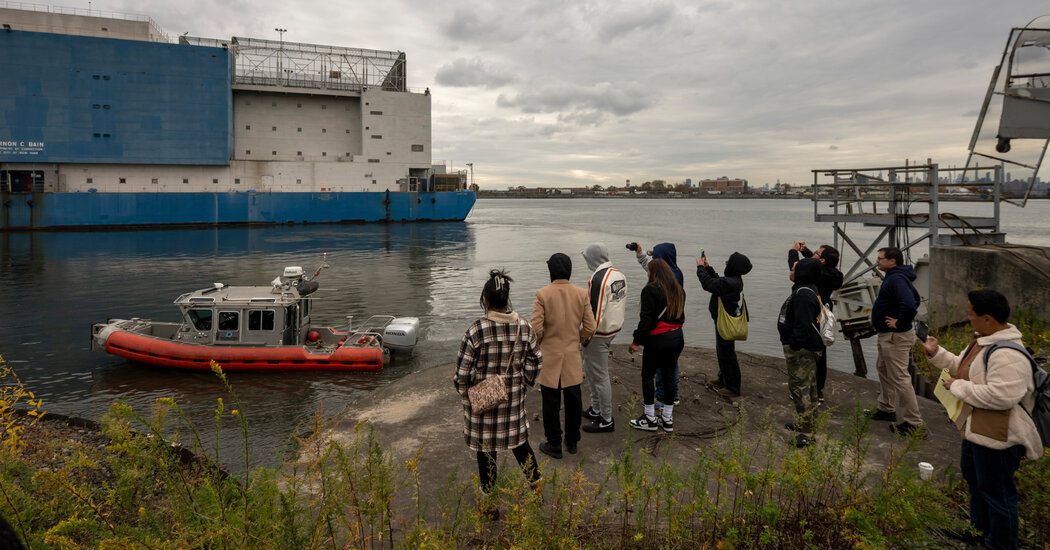Lezandre Khadu stood on the shoreline of the East River in the South Bronx on Monday and bade good riddance to a hulking barge that had been docked there for more than three decades.
“I’m shaking. I have goose bumps,” said Ms. Khadu, whose son, Stephan Khadu, 24, had died four years ago after being held on the barge, a floating jail docked in the water across the East River from the Rikers Island jail complex.
The 625-foot blue-and-white barge, known officially as the Vernon C. Bain Center, and more unofficially as The Boat, has been sold by New York City to a Louisiana scrap company. On Monday the buyer came to pick it up from this industrial edge of the South Bronx and begin towing it south for recycling.
“It’s been a dagger in my heart since he died, but I know he is dancing in joy today,” Ms. Khadu said of her son, shortly before workers began casting the lines off the five-story vessel, thought to be the country’s only floating jail when it was decommissioned in 2023.
She and other former detainees and their loved ones had turned out to watch the barge be taken away.
“It represents the end to so much pain and trauma,” said Edith Mayfield, whose husband, Marvin Mayfield, had been locked up on the boat for 11 months under “unbearable conditions” in 2008, then lobbied for years to have it closed, before dying in 2023.
The Bain Center, which opened in 1992 and was decommissioned in 2023, stretched the length of two football fields and was roughly five stories in height. Today it looks something like a container ship stacked with cargo.
It had an 800-inmate capacity and was the last of a handful of floating jails used by New York City in the late 1980s and early 1990s, a temporary remedy to address a soaring prison population fueled by the crack cocaine epidemic. It opened just as the city’s jail population, which was then above 20,000, was beginning to decline.
The barge was problematic from the start, having arrived as New York City’s most expensive jail of the day, at a cost of more than $160 million. It was riddled with design and construction problems, and was finished eight months behind schedule and $35 million over its original budget.
“We’re finally able to close a chapter on what probably wasn’t a great idea to begin with,” said Max Taffet, an official with the city’s Economic Development Corporation.
He said that Louisiana Recycling had paid the city $1.45 million to take on the barge for scrap.
Randy Boudreaux, an executive with the company, said it would take the vessel about two weeks to reach the company’s scrapyard. There, workers with torches will carve up the roughly 16,000 tons of metal into usable scrap for recycling into other products.
As the barge was towed away from the shoreline, Edwin Santana cursed it and cheered its departure.
Mr. Santana said he had been locked up on the boat in 2009 before being transferred to a state prison on gun charges.
Its tight quarters and corridors plagued the more claustrophobic detainees. Some developed seasickness from the rocking waves and would ask to be taken to the infirmary for Dramamine.
Plus, he said, “It was cold every month of the year.”
“It was like a slave ship,” said Mr. Santana. “Basically everyone in there was Black and brown,” he said.
Corey Kilgannon is a Times reporter who writes about crime and criminal justice in and around New York City, as well as breaking news and other feature stories.
The post ‘The Boat,’ Despised Floating Jail Near Rikers, Heads for the Scrap Heap appeared first on New York Times.




